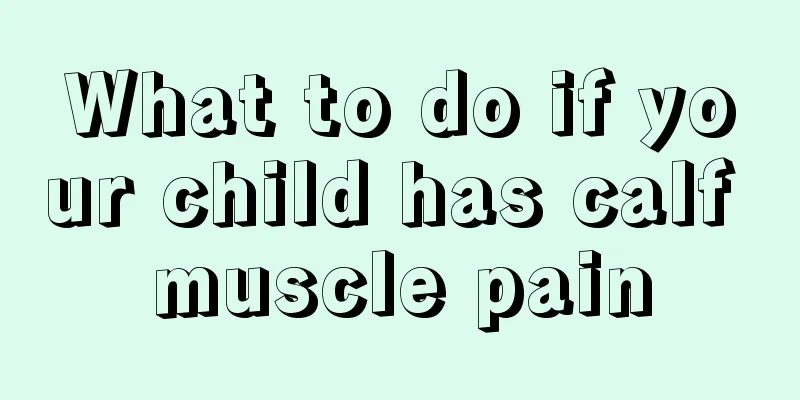What to do if your child has calf muscle pain

|
Sometimes, children will experience bone pain during their rapid growth process. This is because the rapid growth of bones and muscles will involve some pain nerves. So, what should you do if your child’s calf muscle pain is caused by growing pains? The best way is for parents to add more nutrients to their children's diet to relieve growing pains. Growing pains refer to pain around the knee joint or the front of the calf in children. There is no history of trauma to these areas, the activities are normal, and there is no redness, swelling or tenderness in the local tissues. After examining the child and excluding the possibility of other diseases, it can be determined that it is growing pains. Growing pains are mostly physiological pains caused by children's relatively large amount of activity, rapid growth of long bones, and the lack of coordination with the growth and development of local muscles and tendons. The clinical manifestations are mostly lower limb muscle pain, which often occurs at night. Clinical manifestations 1. Mostly pain in the lower limbs The most common sites of occurrence are the knee, calf, front of the thigh, and occasionally in the groin area, and the pain is usually outside the joint. Typically the pain is bilateral, but in some cases it is unilateral. 2. Mostly muscle pain The pain is mostly muscle pain, not joint or bone pain. There is no redness, swelling or heat in the painful area. 3. Pain occurs more often at night The pain occurs almost exclusively at night. Because children are very active during the day, even if they feel uncomfortable, they may not notice it because they are focused on other things. At night, when the body and mind are relaxed, the pain symptoms will make the child feel uncomfortable or even unbearable. diagnosis The diagnosis is usually based on the child's symptoms and results of a physical examination. Before making a definitive diagnosis, doctors need to rule out other disorders that cause similar symptoms, such as restless legs syndrome (characterized by discomfort in the legs, often accompanied by involuntary movements of the legs). X-rays or other diagnostic tests may be done to determine the cause of your child's leg pain. |
<<: The baby is 16 days old and the umbilical cord has not fallen off yet
>>: What is wrong with children's soft nails?
Recommend
How to deal with a child who falls
Children's skin is very delicate, and their k...
Causes of papular dermatitis in children
Dermatitis is a disease that adults are prone to....
Drug treatment for urinary tract infection in children
Children's urinary system is relatively fragi...
Winter baby sleeping bag
Many parents will buy sleeping bags for their bab...
What medicine should children take for vomiting and diarrhea
We all know that children are most likely to suff...
What are the symptoms of intussusception in children?
Intussusception is a very common acute abdominal ...
What's going on when babies scratch their heads and faces?
The safe growth of babies in life is the biggest ...
Why does a child breathe through his mouth?
Mouth breathing is simply called mouth breathing....
Why do babies like to shake their heads?
Shaking the head is a condition that many people ...
What causes autism?
Autism is a mental illness, and now there are mor...
Is it really okay for a three-year-old baby to take a bath every day?
When taking care of their babies, many parents st...
Can a two month old baby sit?
Although two-month-old babies have adapted to lif...
What should we do if we have pericarditis in children?
Expectant mothers will pay special attention to t...
What diseases are related to babies' constant coughing
When a baby keeps coughing, parents will be very ...
Why is the child's hair yellow?
I have always felt that Chinese people’s hair sho...









